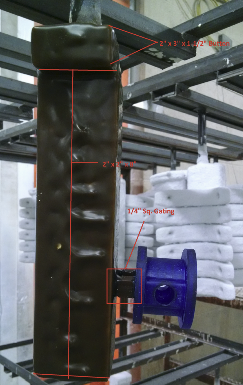Just like to share my experiences working with my investment casting house. So far I haven’t been able to produce any results using the castable resin. I don’t own a Form2 machine, so I’ve been subbing that work to a printer that is making the castable models for me. Maybe someone that has done this method can shed some light on my issue?
Most of what I’ve seen from formlabs are people using the castable material for jewellery. In that sense, the molds are small, and you put the wax/mold into a flash and fill it with plaster. All the instructions I see are typically for those processes.
The other method, investment casting or shell and wax casting is what’s used in more industrial areas. Formlabs does not have any instructions for this process. The method for the wax is simple, you put the wax on the tree, and then you dip it into a ceramic slurry, then dry it, and repeat the process until you have basically a shell of about 8-10 layers. It then follows the same process by going through the autoclave to melt the wax out.
The first issue I came across is that the Preform software does not hollow out and build internal supports. So what I’ve been doing is going into meshmixer and hollowing it out and replacing it with a lattice. This is important as the larger the piece the more ash residue it will leave behind, so the less material the better. Not the best but that’s all I could do.
The second issue, which is the material expanding and cracking my shell. I’ve tried to print 3 models, and they’ve been cracking and exploding my shell during the burnout. I’m sure Formlabs will tell me to follow the burnout schedule that they have published, but it’s not possible as my casting house only has one furnace with a set temperature at 1800F. The first two times it happened I assumed it was because the material didn’t have enough time to soften so it could implode inwards as it was hollow. So I asked my casting house to put it in the morning so it would start at room temperature and slowly get up to around 1500F. It’s not a ideal ramp up, but I was hoping that it would give it enough time for material to soften so when it expands, it would implode inwards. The shell cracked and fell apart at around 800F.
Does anyone have any ideas? Since I don’t have a Form2 it is just too cost prohibitive for me to keep on printing different samples until I find the right settings.
Also a quick note, my casting house is experienced with 3DSystems Quickcast material and they have very little issue with casting those 3D material without changing any of their normal methods. Mind you that the Quickcast material is specifically manufactured with investment casting in mind. They have a paper out detailing a lot of the issues I’m having and how they go about it.
Here are some photos of the part and the process that I tried to document.
The part itself. It is hollow with some internal lattice support.

Part on the tree

Part after dipping in the ceramic (notice the actual wax tree on the background!)

Part exploded after reaching 800F

